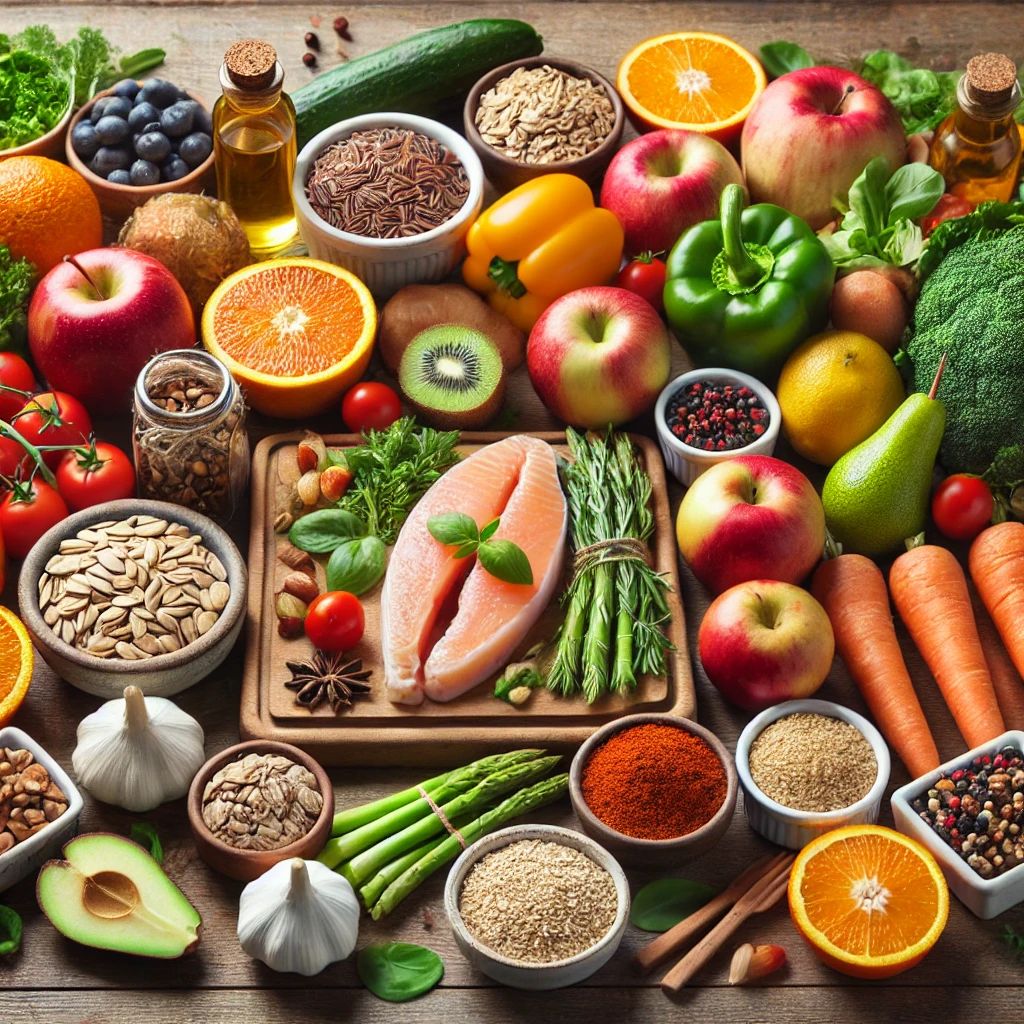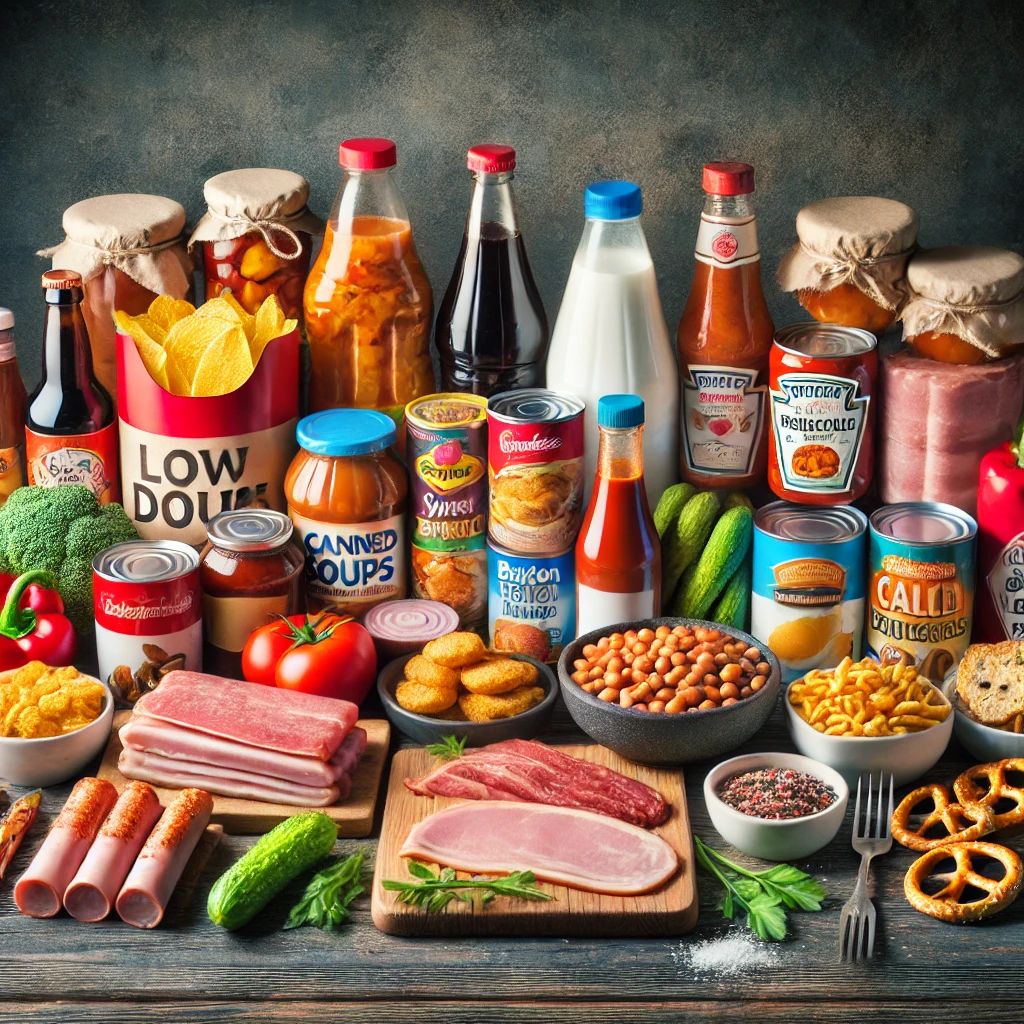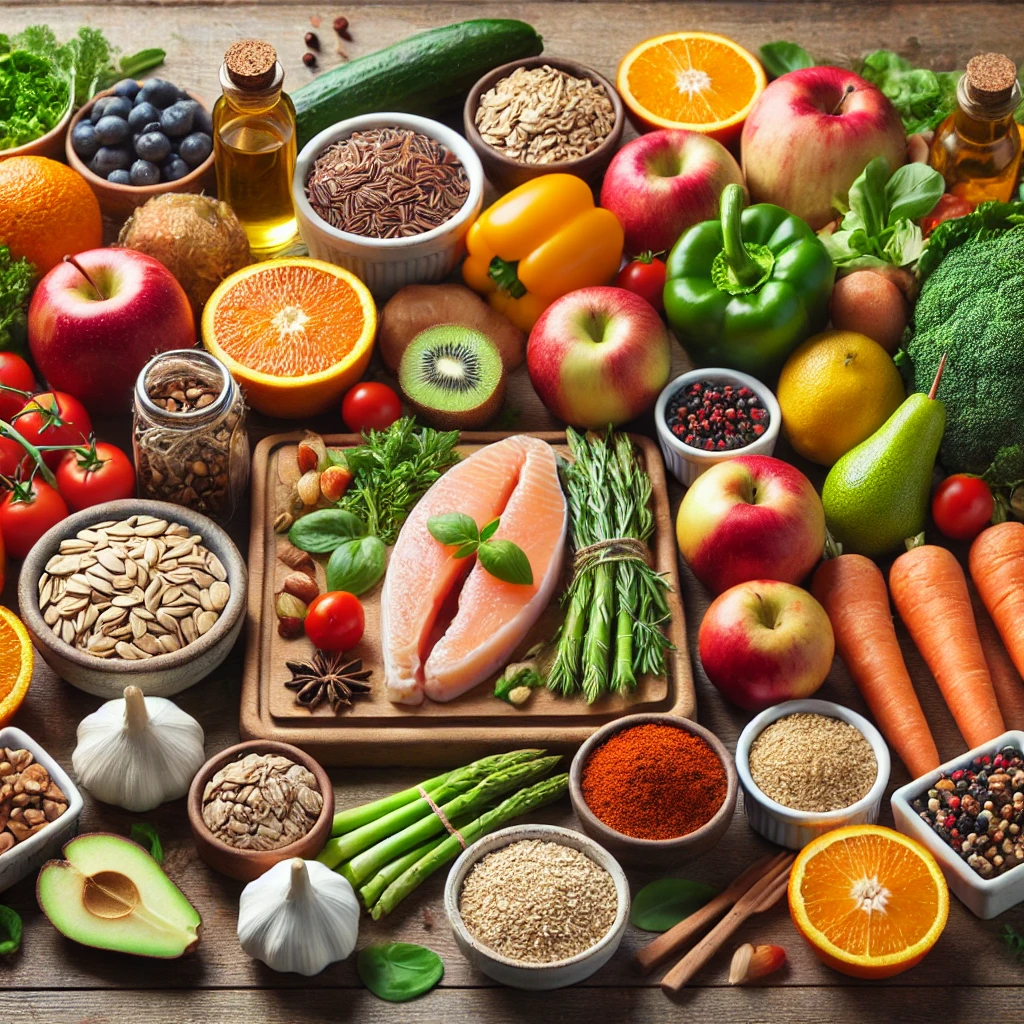A low-sodium diet is essential for individuals seeking to manage or prevent high blood pressure (hypertension). Sodium, commonly found in salt, can cause water retention, leading to increased blood pressure and strain on the heart. By reducing sodium intake, you can lower your blood pressure, reduce the risk of heart disease, stroke, and kidney damage, and improve overall cardiovascular health. In this guide, we’ll explore foods that are naturally low in sodium, strategies for reducing salt in your diet, and tips for adding flavor without relying on salt.
Why Is Sodium Linked to High Blood Pressure?
Sodium is an essential mineral, but consuming too much can lead to serious health issues, particularly hypertension. Sodium makes the body retain water, which increases the volume of blood flowing through blood vessels, raising blood pressure. High blood pressure forces the heart to work harder, which can damage arteries, leading to heart disease, kidney problems, and stroke.
According to Mayo Clinic, limiting sodium intake to 1,500–2,300 milligrams per day can significantly help in controlling hypertension. Reducing sodium also enhances the effects of blood pressure medications for those already undergoing treatment.
Benefits of a Low-Sodium Diet
Lowering sodium intake offers several health benefits, including:
Reduced Blood Pressure: Lower sodium intake directly leads to lower blood pressure, reducing the strain on your heart.
Improved Heart Health: Reducing sodium can lower your risk of heart disease and stroke by keeping blood pressure within a healthy range.
Better Kidney Function: Sodium control reduces the risk of kidney damage, as high blood pressure can harm the kidneys over time.
Reduced Fluid Retention: Less sodium intake can prevent bloating and water retention, which are common side effects of a high-sodium diet.
Foods to Include in a Low-Sodium Diet
Adopting a low-sodium diet involves choosing fresh, whole foods over processed and packaged options, which are often loaded with hidden sodium. Here are some naturally low-sodium foods that you can include in your diet:
Fresh Fruits and Vegetables: Almost all fresh fruits and vegetables are naturally low in sodium. Some of the best options include leafy greens, tomatoes, cucumbers, bell peppers, carrots, apples, oranges, and berries.
Whole Grains: Whole grains such as brown rice, quinoa, oats, and barley are excellent choices that contain little or no sodium.
Lean Proteins: Fresh cuts of meat, poultry, and fish are naturally low in sodium, especially if you avoid added marinades or seasoning mixes. Opt for skinless chicken, turkey, and fish like salmon or trout.
Legumes: Beans, lentils, and chickpeas are naturally low in sodium, making them great alternatives for adding protein to your meals.
Nuts and Seeds: Unsalted nuts and seeds like almonds, walnuts, chia seeds, and flaxseeds provide healthy fats and nutrients without sodium.
Dairy: Look for low-sodium versions of dairy products like milk, yogurt, and cheese. Plain, unsweetened varieties are often the best choices.
Herbs and Spices: Fresh herbs (such as basil, cilantro, parsley) and spices (like black pepper, garlic powder, turmeric, and cumin) are excellent for flavoring food without salt.

Foods to Avoid on a Low-Sodium Diet
Many processed and packaged foods contain large amounts of sodium. Here are some common culprits that should be limited or avoided:
Canned Soups and Broths: Canned and prepackaged soups often contain high levels of sodium. Look for low-sodium or sodium-free alternatives, or make homemade soups.
Processed Meats: Bacon, sausage, hot dogs, and deli meats are loaded with sodium as part of the curing and preservation process. Opt for fresh, unprocessed meats.
Canned Vegetables: Many canned vegetables are preserved in sodium-rich brine. Opt for fresh or frozen vegetables or rinse canned vegetables before use.
Packaged Snacks: Chips, crackers, pretzels, and other salty snacks should be avoided or replaced with unsalted varieties.
Frozen Meals: Many frozen dinners contain large amounts of sodium. Opt for home-cooked meals or low-sodium versions if available.
Condiments and Sauces: Soy sauce, ketchup, barbecue sauce, and salad dressings can be high in sodium. Look for low-sodium versions or make your own.

Tips for Reducing Sodium and Adding Flavor
Cutting down on sodium doesn’t mean your meals have to be bland. Here are some tips for reducing sodium while still enjoying flavorful food:
Use Fresh Herbs and Spices: Replace salt with fresh herbs like parsley, cilantro, basil, thyme, or dill. Spices like garlic powder, paprika, chili powder, and turmeric can add depth to your dishes.
Citrus and Vinegar: Lemon juice, lime juice, and vinegars (like balsamic or apple cider) can brighten up the flavors of your meals without the need for salt.
Homemade Seasonings: Create your own salt-free seasoning mixes using ingredients like onion powder, garlic powder, black pepper, and dried herbs.
Read Labels: Be mindful of the sodium content in packaged foods by carefully reading labels. Choose products labeled as “low sodium” or “no added salt.”
Rinse Canned Foods: Rinse canned vegetables, beans, and legumes under water before cooking to reduce sodium content.
Sample Low-Sodium Meal Plan
Here’s a simple, low-sodium meal plan to inspire your diet:
Breakfast: Oatmeal topped with fresh berries, chia seeds, and a sprinkle of cinnamon.
Lunch: Grilled chicken salad with mixed greens, cucumbers, cherry tomatoes, and a homemade lemon vinaigrette.
Snack: Unsalted almonds or a piece of fruit like an apple or banana.
Dinner: Baked salmon with a side of quinoa and steamed broccoli seasoned with garlic and olive oil.
Dessert: Fresh fruit salad with a squeeze of lime.
A low-sodium diet is one of the most effective ways to manage high blood pressure and reduce the risk of heart disease, stroke, and kidney damage. By choosing fresh, whole foods and using flavorful herbs and spices, you can enjoy delicious, heart-healthy meals without relying on salt. For more information on managing hypertension through diet, visit Mayo Clinic.
For more health tips, explore our Health Journal and Nutrition.
1.Suggested Breakfast
2.Suggested Lunch
3.Suggested Dinner
Disclaimer: The information provided about this dietary regime is for educational and informational purposes only. It is not intended to replace professional medical advice, diagnosis, or treatment. While special dietary regimes may offer benefits for certain individuals, individual results may vary. Always consult a qualified healthcare professional or dietitian before starting any diet to ensure it is suitable for your specific health needs and conditions.
